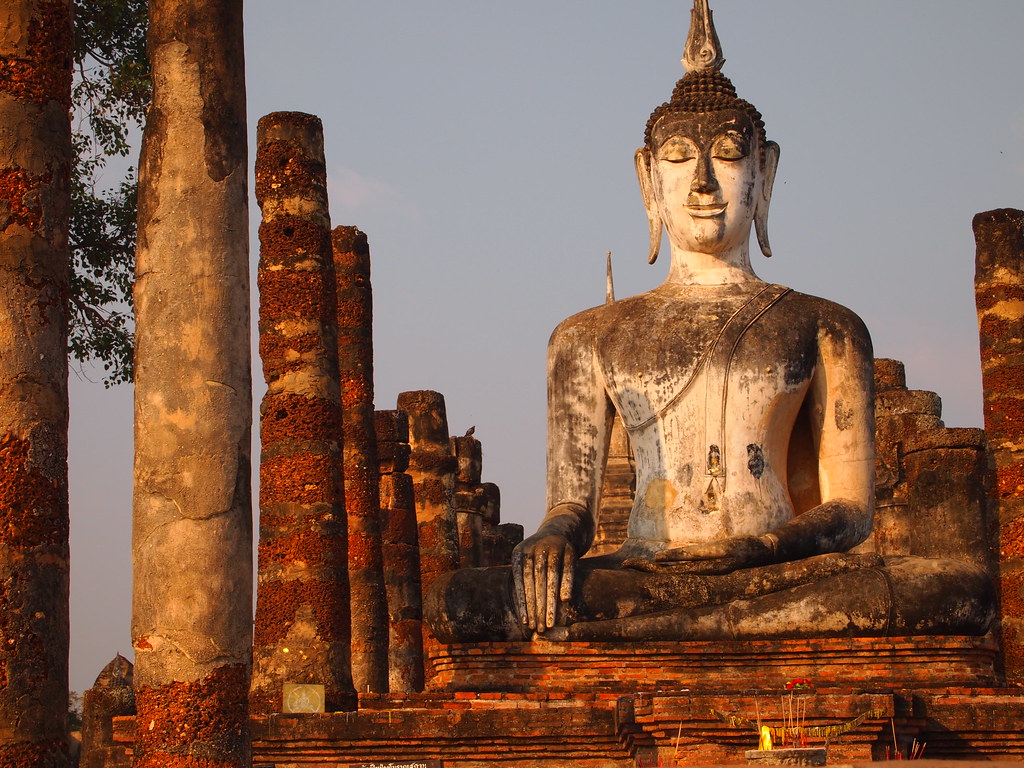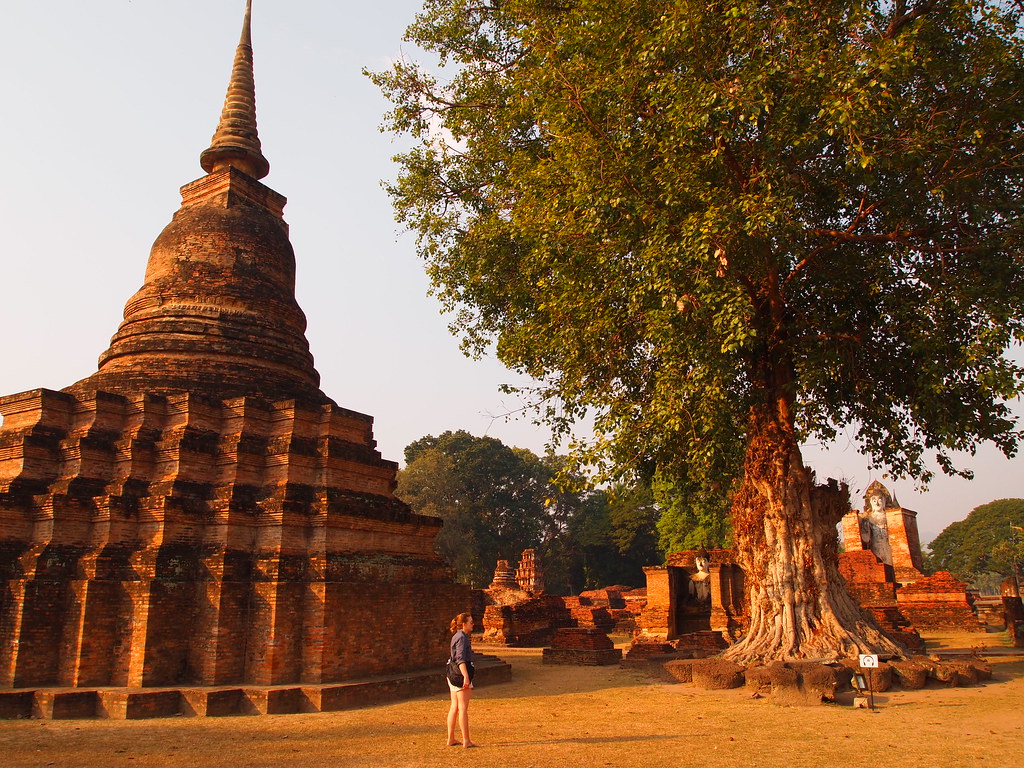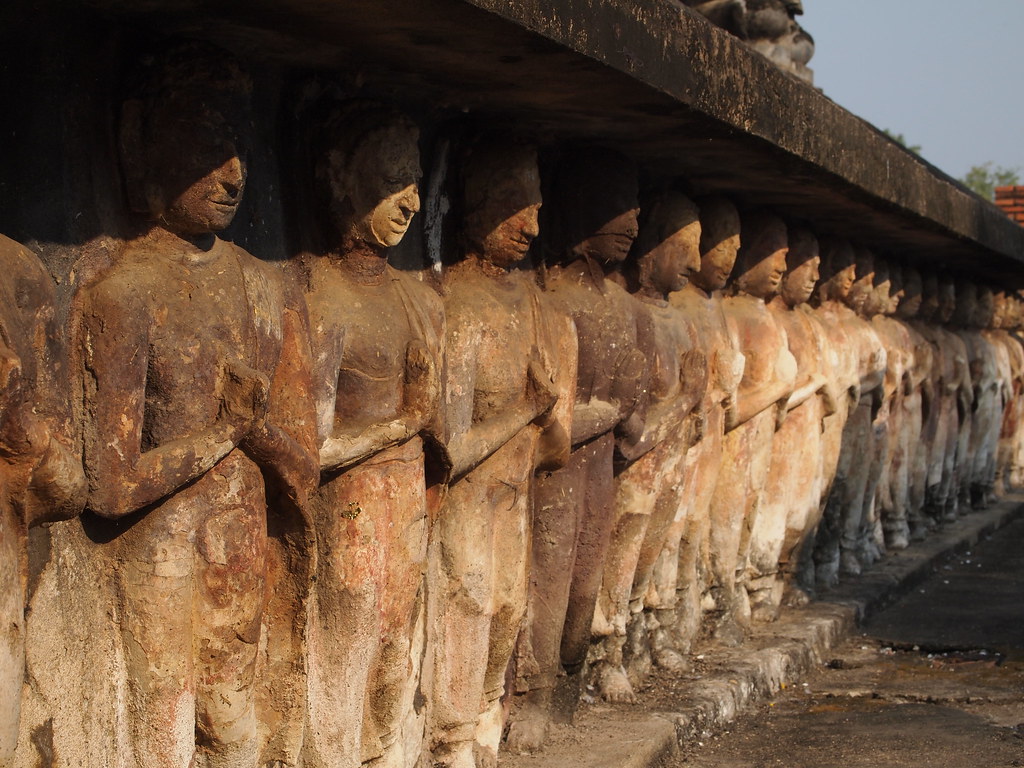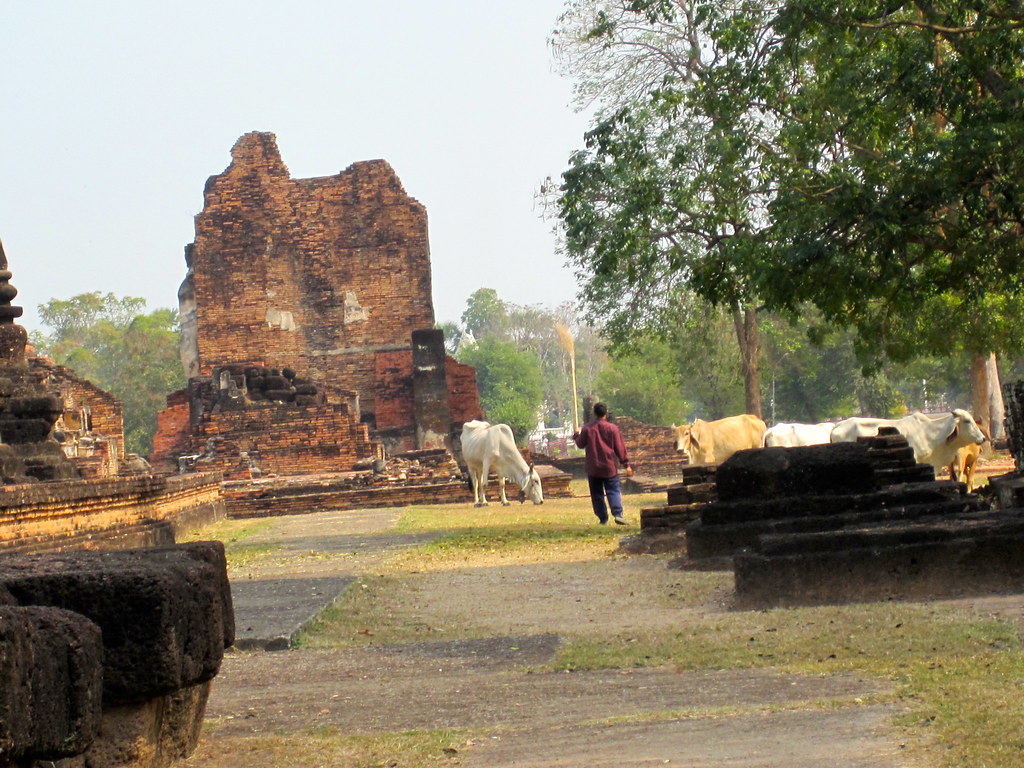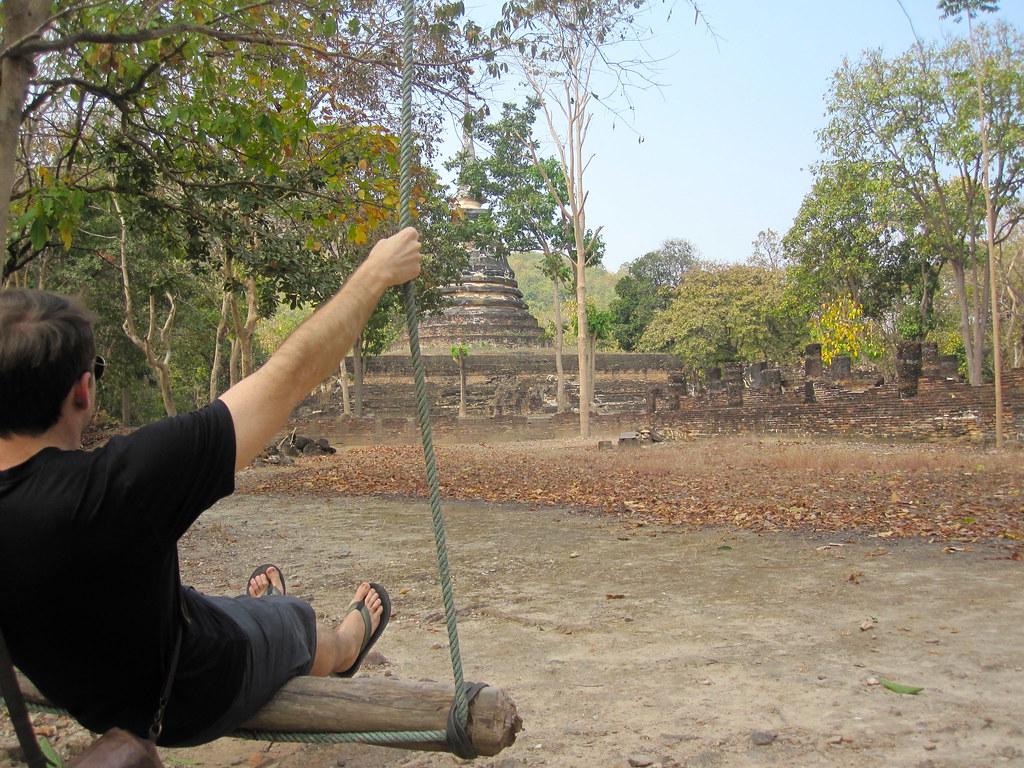Ruins and Rice Paddies: How to see Sukhothai in a day
A 7-hour bus ride from Bangkok, and we’re still in a Thai capital — the ancient capital of Sukhothai, the first major Thai kingdom. This kingdom lasted from approximately 1250 to 1450 AD, a time that saw the later Crusades, Joan of Arc, and the building of the cathedral at Chartres in Europe. The Sukhothai kingdom was a touchstone for Thai language, art, and architecture, and because it was never invaded or sacked, the ruins of the old capital city still exist. We hopped on a bike and spent the day peddling past rice fields and ruins. For other travelers headed this way, here’s how we saw Sukhothai in one day:
We stayed at a guesthouse in New Sukhothai, woke up early, and had a hearty breakfast (banana pancake, omelette, coffee, juice) before catching the public bus to the Old City (30 baht per person). You can catch the bus in front of the unfortunately named Poo Restaurant.
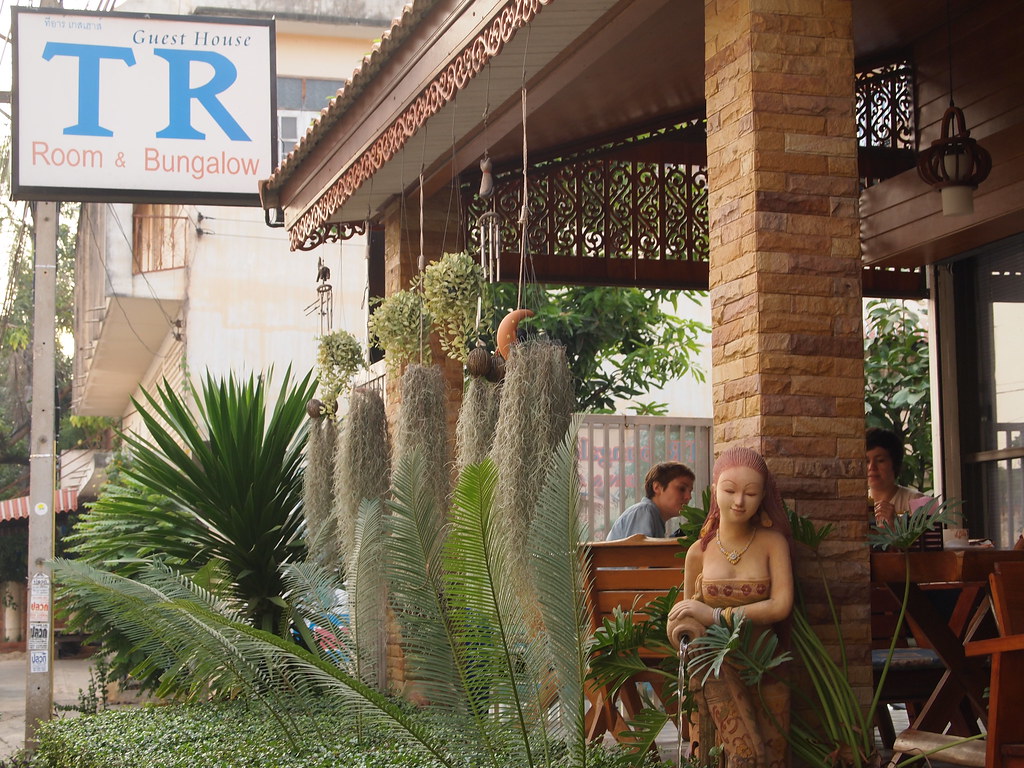

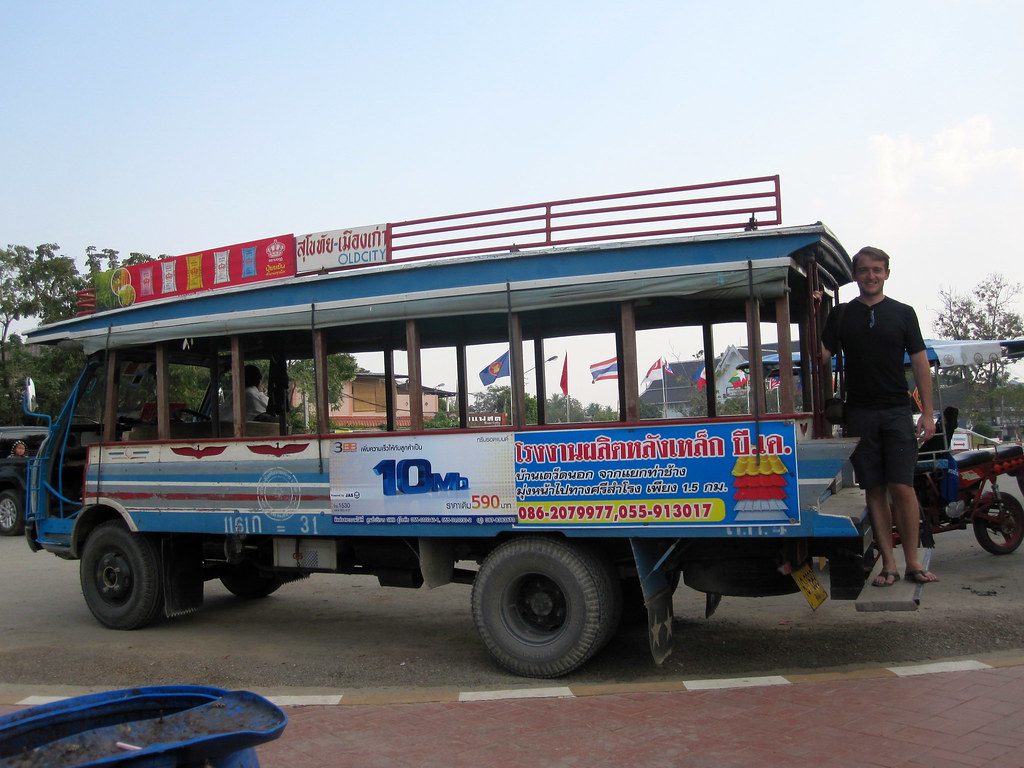
The Sukhothai park is divided into three zones: Central, Western and Northern. Each charges a 100 baht per person entry fee. The Central zone has the most impressive ruins, the largest of which is Wat Mahathat, the administrative and religious nerve center of the Sukhothai kingdom — a Siamese Vatican.
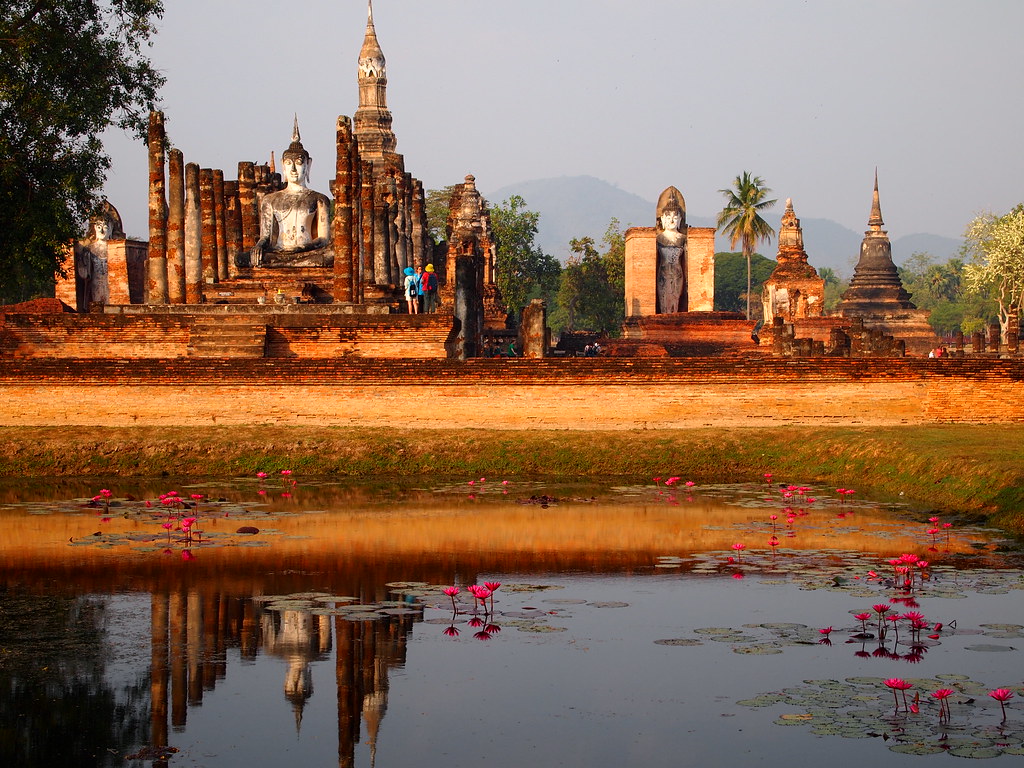
The Central Zone also includes Wat Si Sawai, a temple with three Khmer-style spires, and Wat Sa Si, boasting a fat chedi, or stupa (a sort of Buddhist reliquiry) and surrounded by a large moat.
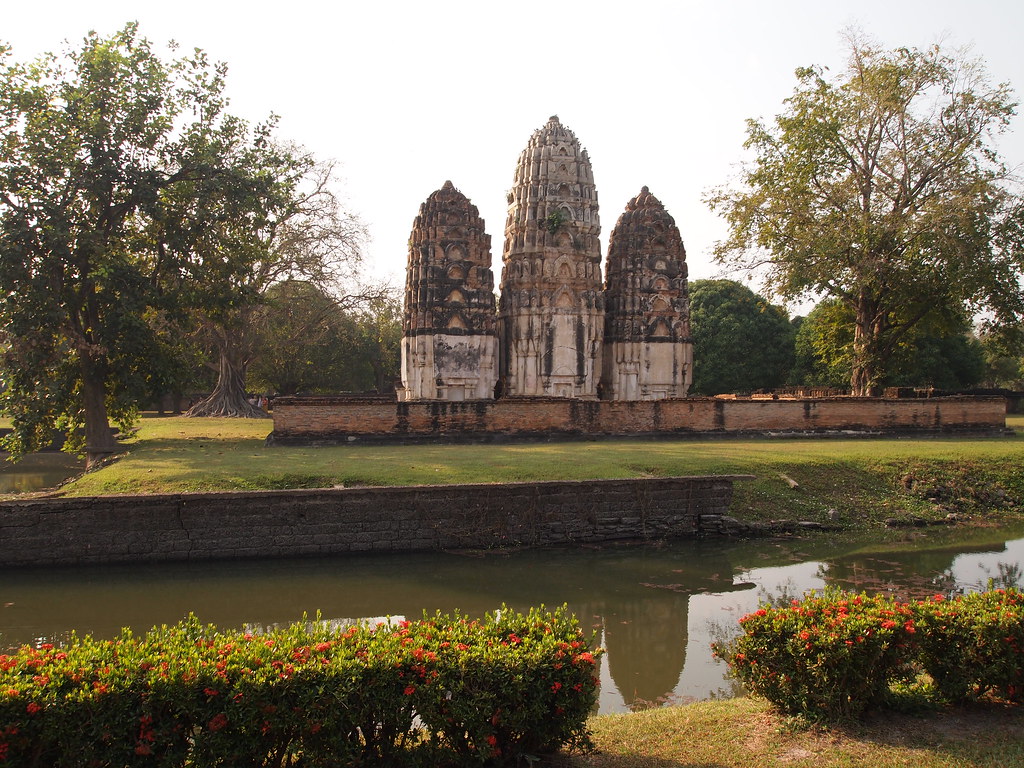
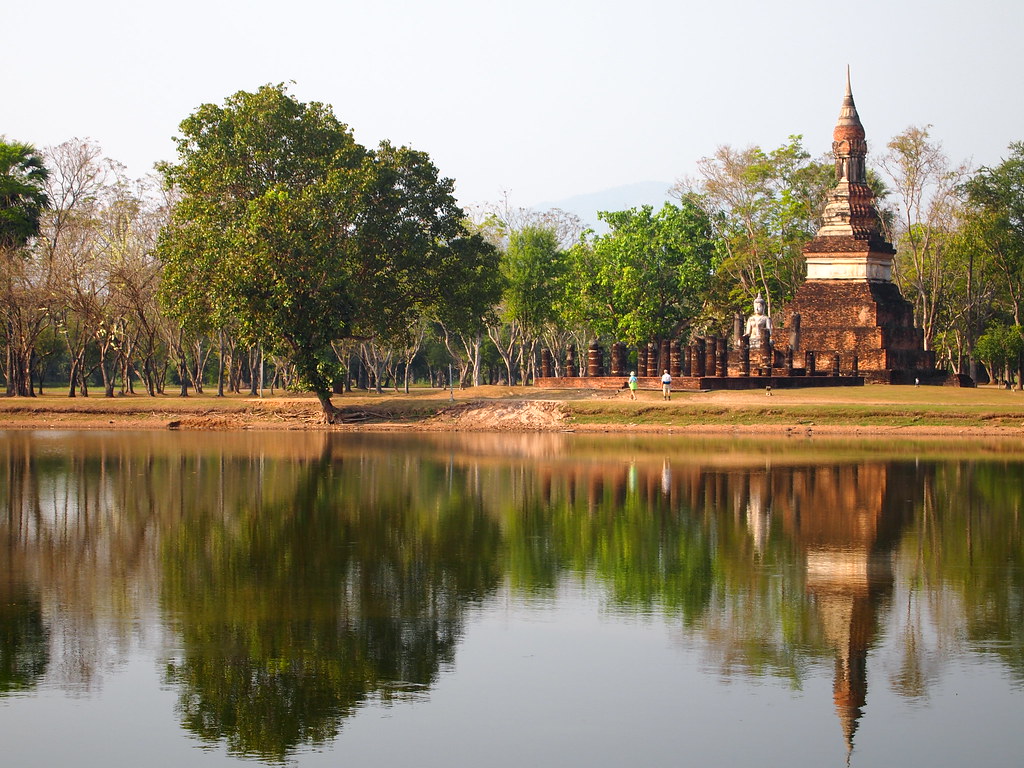

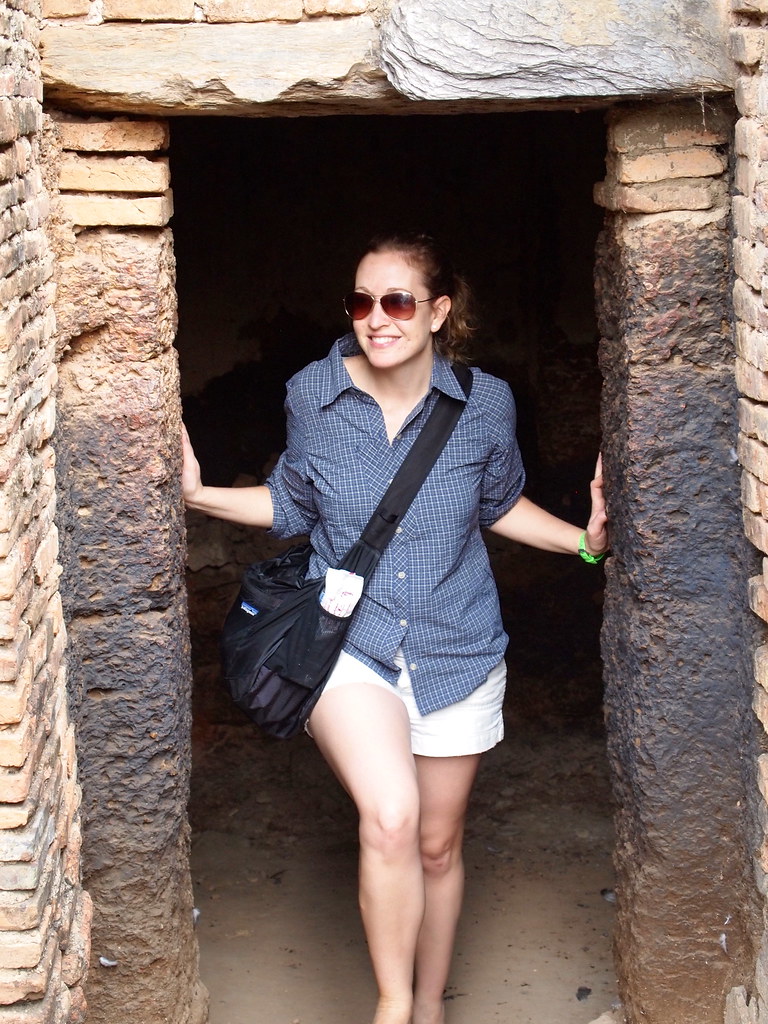
If you want to visit the Northern or Western zones, it’s advisable to rent a bike for 30 baht from a shop just outside the park.
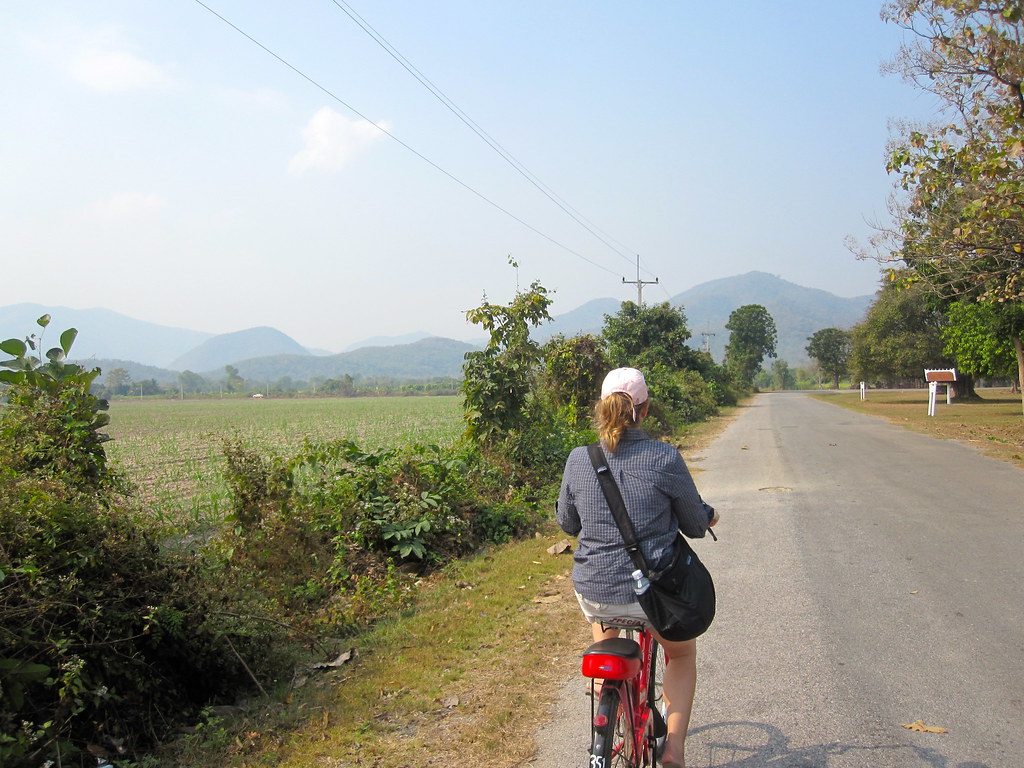
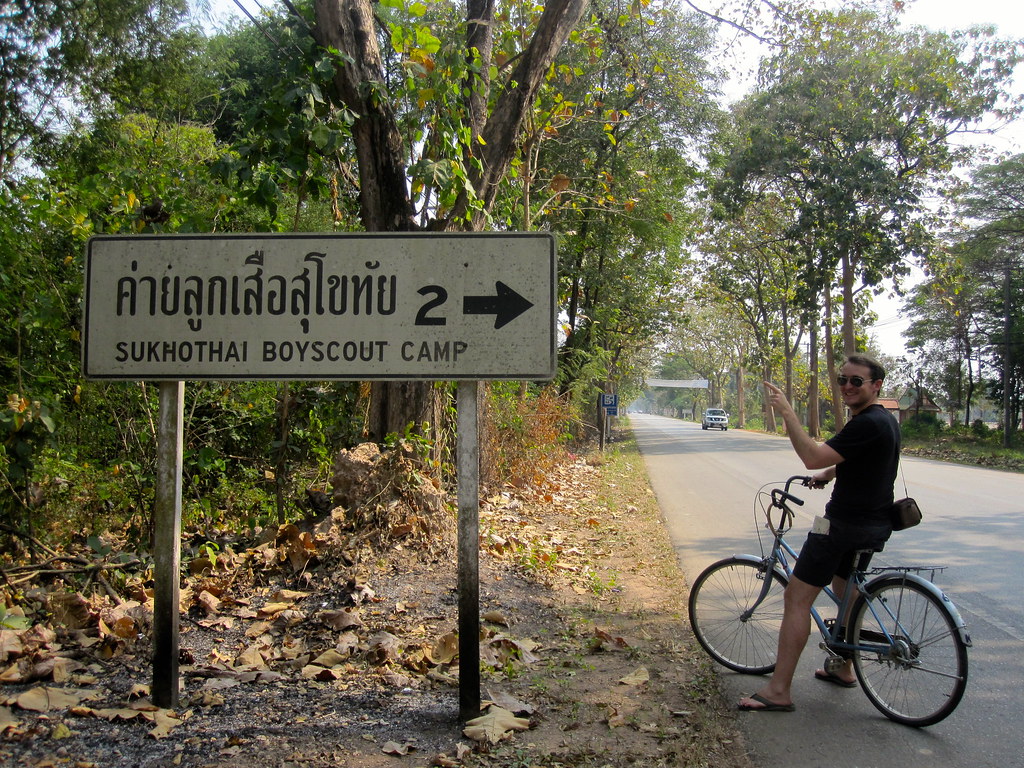
The Northern Zone’s headliner is Wat Phra Phai Luang, another temple sporting a moat, Khmer-style spires and multiple beheaded Buddhas. Few tourists venture outside the Central Zone. We only had to share this temple with a herd of cows.
The Western Zone is the most remote of them all. We biked past working rice paddies abutting temples that looked more than old — they seemed primeval, barely peeking out from the jungle that has torn them asunder. The Western zone requires a bit of work, too. In addition to biking to reach the temples (it’s too far to walk), many of the best are situated at the tops of hills. To reach them, these farangs had to follow in the footsteps of the Buddhist faithful and make the ascent. It must be a metaphor for enlightenment, but I was merely cursing the heat and mosquitos.
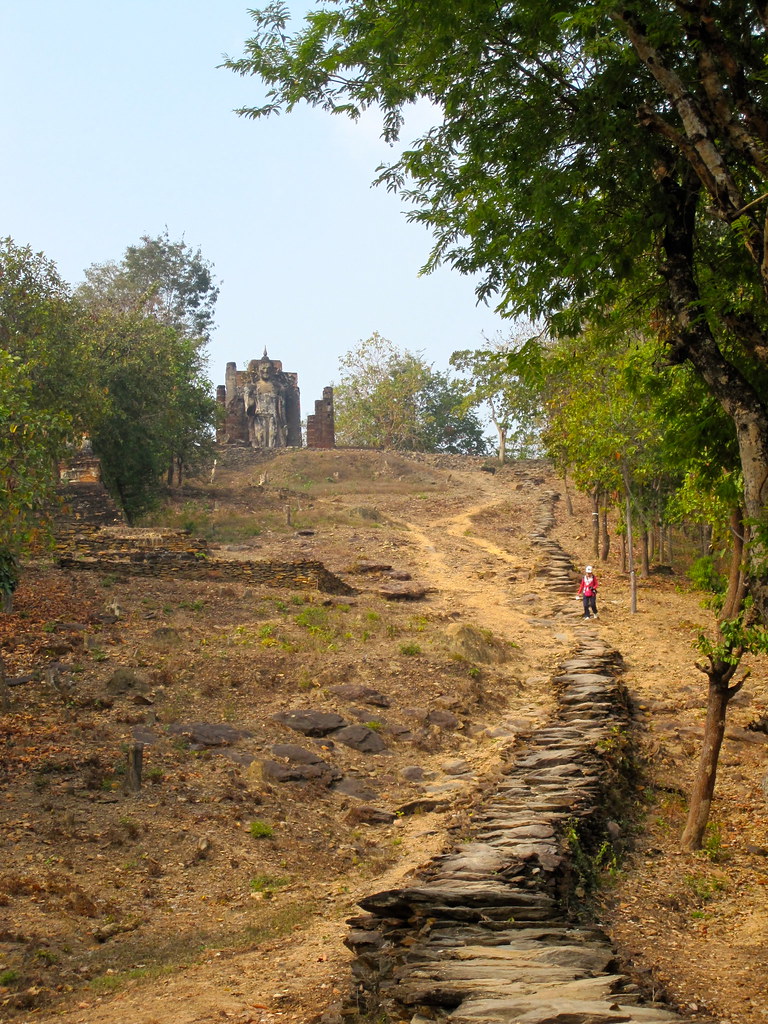
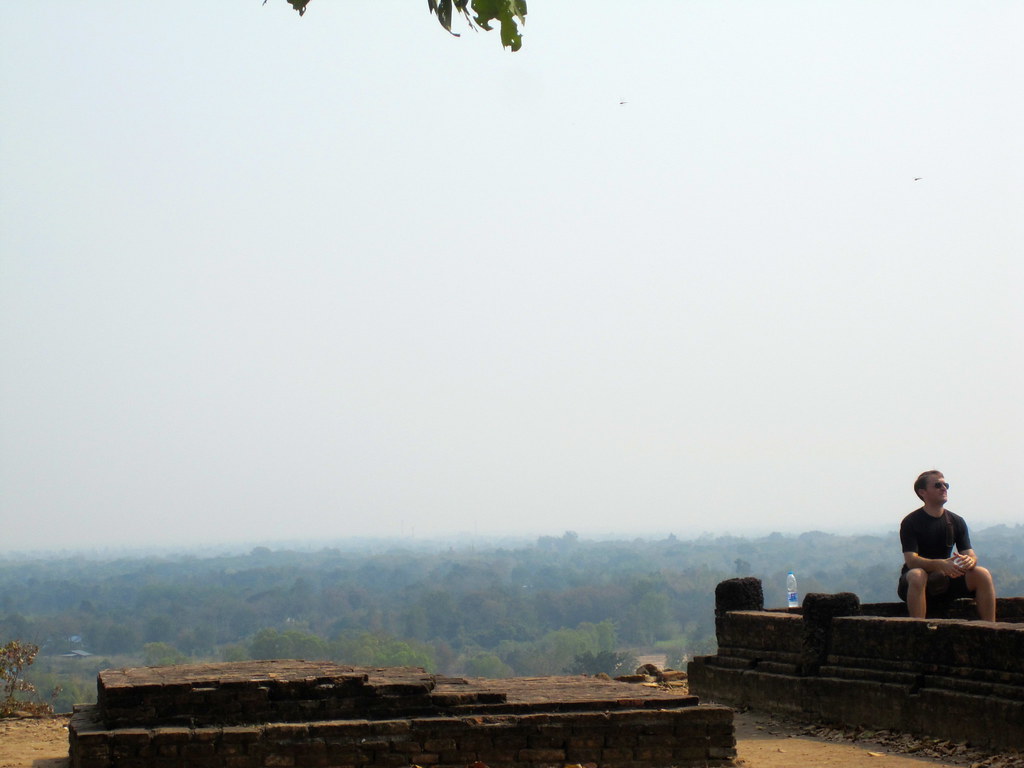
Having gotten our fill of culture, excitement, and exercise, we rewarded ourselves with some fresh coconut juice, better known as God’s Gatorade.

Back in New Sukhothai, we followed our modus operandi for locating dinner: we found a delicious-smelling night market full of Thais, pointed to the food on the table next to us, and told the waitress: “Same, please.” Nightcaps can be had at Chopper Bar, a drinkers’ institution that marries a good location, cheap drinks, and sweaty, pretty young things. It’s The Swamp, Sukhothai edition. Instead of Bud Light, we ordered the similarly undrinkable Chang. Just like in college, we drank it gratefully after a long, hot day. There must be an enlightened lesson in that somewhere.

